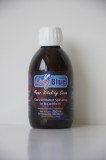Natamycin, also known as pimaricin, is a polyene macrolide antibiotic produced by fermentation of certain type of the bacterium Streptomyces. The natacyn was discovered in 1955 and approved for medical use in the United States in 1978. It is on the World Health Organization's List of Essential Medicines.
Natamycin preservative has been used for decades in the food industry as a hurdle to fungal outgrowth in dairy products and other foods. The activity of natamycin against yeasts and moulds, but not bacteria, makes it convenient for uses in foods that undergo a ripening period after processing. Its low solubility in water and most organic solvents makes it suitable for the surface treatment of foods.
Key Benefits of Natamycin
Extend shelf life
Prevent food spoilage caused by yeasts and molds
Replacement of traditional chemical preservatives
Common with chemical preservatives
Less dependence on pH for efficacy
No impact on taste and flavor
Natamycin In Food
Natamycin E235 Preservative Uses
Natamycin can effectively inhibit the growth and reproduction of various molds and yeasts, but has no inhibitory effect on bacteria. It is often used to kill yeasts and molds on the surface of natural fermented products such as yogurt, cheese, ham, and sausages, thereby extending the shelf life. It is used medically as an anti-fungal eye infection.
How does Natamycin Work?
Natamycin inhibits the growth of yeasts and molds and prevents them from producing toxins, but has no effect on bacteria because their membranes lack sterols. The mechanism of action is to combine with the sterols (mainly ergosterol) in the fungal cell membrane, rather than making the membrane permeable. This is the functional mechanism of the chemical synthesis of preservatives sorbate and benzoate.
Natamycin FAQs
What are the storage conditions of natamycin?
Natamycin has a limited shelf life. You need to keep it at cool temperatures or refrigerated until you use it. Once the natamax preservative is opened, you need to wrap it tightly and store it in the freezer.
Is natamycin safe?
Natamycin does not have acute toxicity. No evidence shows natamax, at either pharmacological levels or levels encountered as a food additive, can harm normal intestinal flora. However, some people may be allergic to natamycin.
How to apply natamycin in the food industry?
Natamycin can be applied to the surface of food to prevent mold growth on the casing. Also, it is commonly used in products such as cream cheeses, cottage cheese, sour cream, yogurt, shredded cheeses, cheese slices, and packaged salad mixes.
Which pathogens can natamycin act against?
Natamycin can act against pathogens including Escherichia coli, Listeria monocytogenes, Salmonella Typhimurium and Aspergillus niger.
For more information about preservative 235 and e235 preservative, please feel free to contact us!
There are many enzyme manufacturing companies, but we are one of the best choices for you.
Localisation : Room 707,Building 1, 169Shengxia Road, Pudong New District 201210, Shanghai, China, 225433 taixing,
Personne à contacter : Dave Tong, +18 6 21 08 68 17







